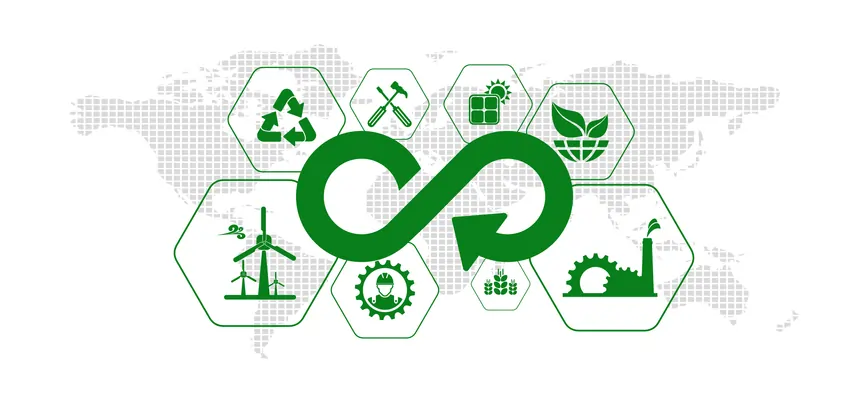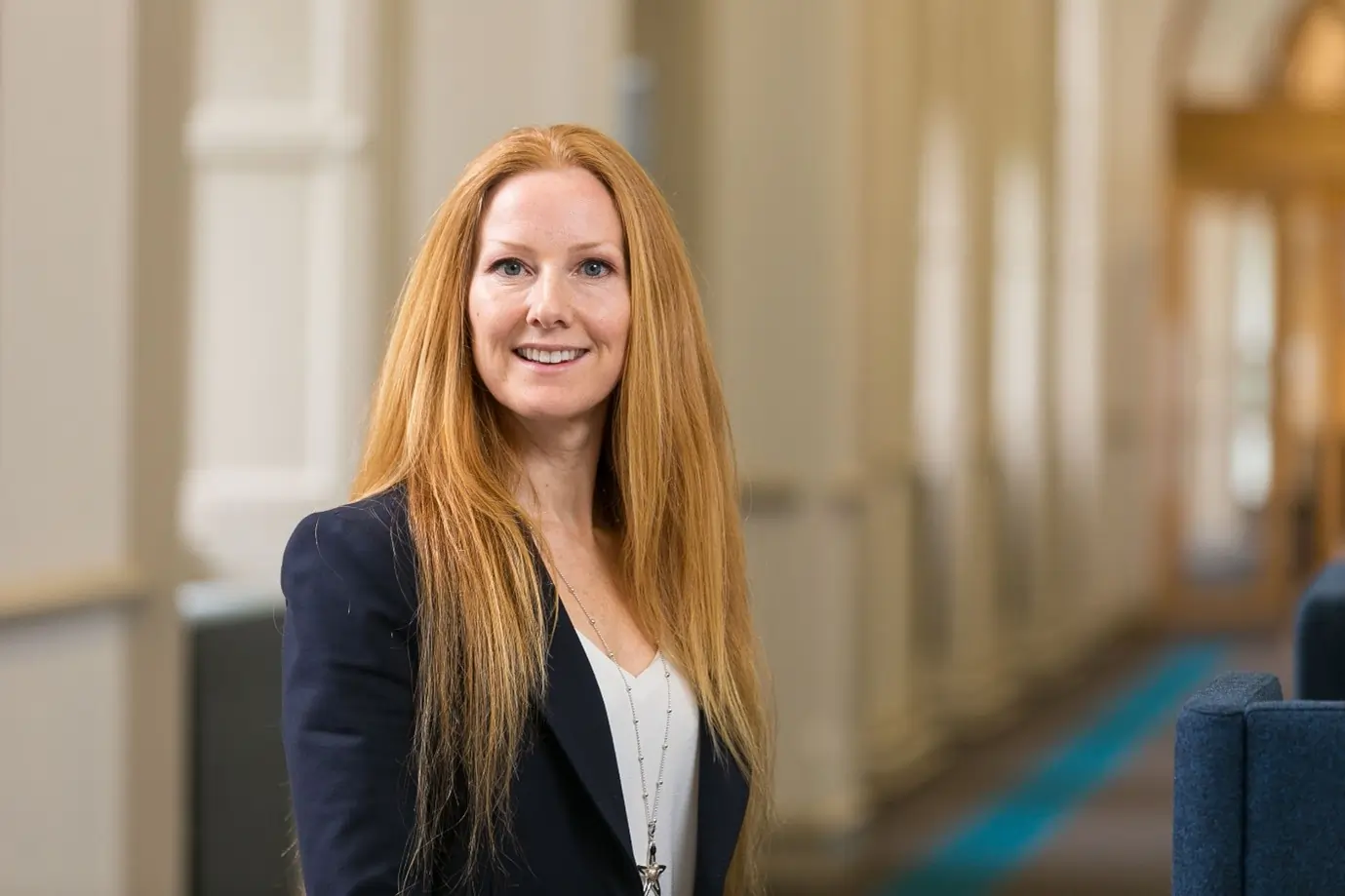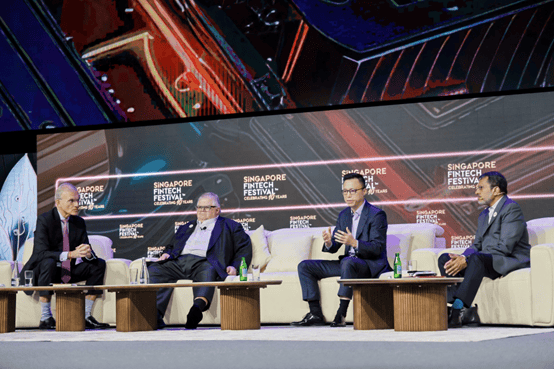
How to successfully embrace the biocircular economy

Managers, companies, and entire industries must embrace the sustainable, biocircular economy as the effects of global warming and the wider climate crisis highlight the need to achieve sustainable development goals. This will help ensure various companies, as well as our planet, will survive and thrive into the future.
A biocircular economy is an economy powered by nature, emphasising the use of biologically-derived, or bio-based, renewable materials which can often go unused during production or are simply discarded. It is focused on minimising waste, sharing resources, and keeping products circulating through resale or reuse.
Examples of this include clothes made of milk that would have gone to waste, biodegradable plastics made from bacteria, leftover soy, or discarded timber, or using waste mushroom and bamboo for various different products.
There is enormous potential for industries and companies which transition to biocircularity, ranging from those in agriculture to energy and pharmaceuticals. This is evident from within the US, where the bioeconomy is already valued at $1 trillion dollars.
Existing bioeconomy approaches often focus on the positives of transitioning to bio-based materials, but the risks and difficulties cannot be ignored. For example, using bio-based materials to produce biofuels has led to environmental and societal problems, including hunger, land grabbing, and destitution, especially among indigenous peoples.
If businesses switch to a bioeconomy strategy without ensuring sustainability and circularity, they may risk engaging in biowashing. Similar to greenwashing, biowashing involves adopting aspects of the bioeconomy to enhance public image with little or no practical improvement to social or environmental outcomes. Companies must avoid biowashing and consider what key principles will actually make the bioeconomy work for them.
In a recent paper written with co-authors Aideen O’Dochartaigh and Orlagh Reynolds from the DCU Business School, and Andrea Prothero and Enrico Secchi from UCD College of Business, we have provided a framework that managers can use in strategic decision-making.
This involves five EARTH principles (ecology, authenticity, resilience, transformation, and holism) which have been developed to ensure the bioeconomy transition benefits organisations and society without destroying the environment, and that individuals avoid pitfalls when moving toward more sustainable economic and social systems.
- Ecology
Organisations need to adapt their norms and values so that preservation and nurturing of ecosystems is at the core of decision-making, and managers need to understand bio-based alternatives and their value cascade. This involves prioritising the production of high-value products, such as pharmaceuticals, before using materials to produce lower value goods, such as bioenergy.
Managers must also consider the ecosystems of their bio-based materials. Ecosystems consist of varied and complex resources that must be integrated into bioeconomy planning. Under bioeconomy planning, the resources, waste, and characteristics of the ecosystem, whether urban or rural, guide the development of economic activity.
For example, German company Prolupin harvests ingredients for vegan meat and dairy alternatives from a plant called lupine which be grown on the poor, sandy soils of the coastal region of Mecklenburg in Northern Germany. As a nitrogen-fixing plant, lupine also enriches the soil more than other crops. The company’s innovation in extracting food ingredients from lupine provides farmers with higher margins than those for rye, the crop traditionally grown in this type of soil.
- Authenticity
This principle focuses on avoiding mistakes of the past and ensuring sustainable, biocircular practices are achievable, which means avoiding biowashing. Pretending to be green or focusing narrowly on the use of bio-based materials will damage not only the planet but also the company’s reputation and bottom line.
Instead of just trying to appear sustainable, companies must authentically apply sustainable principles to their operations and products. Companies are urged to work with ecology experts to ensure their use of bio-based materials is managed appropriately.
For example, IKEA faced criticism in 2021 when it was found they were sourcing timber from Russian suppliers practicing illegal logging in protected forests. At first, IKEA denied the reports, but after investigating and working with certification bodies and key stakeholders, placed a temporary ban on timber from the Russian Far East and Siberia.
- Resilience
The ability to withstand shocks and address conflicting goals is vital. Moving toward biocircularity will have significant effects on the resilience of the company, on the natural environment, and on the social systems involved. At the operational level, companies will need organisational flexibility and supply-chain agility to address high environmental uncertainty and product complexity.
The effectiveness of unfamiliar biomaterials as well as new processes will need to be compared with current technologies. The procurement of biomaterials, for example, might be subject to different types of disruptions compared with that of traditional materials.
Companies from the oil and gas industry, for example, have been criticised for failing to move to renewable energy. However, Finnish company Neste (formerly, Neste Oil) embraced the transition early, publicly stating that the dependence on non-renewable resources must decrease dramatically. The company developed new technology in 1996 to generate biofuels from waste fats. Now two-thirds of their profits come from its renewable products business.
- Transformation
Transitioning to a sustainable, biocircular economy involves a total transformation, not only within businesses, but outside of industries. Humanity needs to transform how it thinks about and engages with products, alongside re-evaluating ideas of ownership, of consumption, and of what is valued within society.
Transformation in this area is already being encouraged and incentivised by governments and consumers, and this will only increase in the future. Organisations that recognise these changes and prepare for them will be in a strong position to develop networks and embrace the biocircularity.
- Holism
Holism involves incorporating systems thinking into individual and organisational decision-making. Researchers have argued for decades about the need to recognise the interconnections between the environment, economy, and society. This can be a challenging shift as businesses must look at complex systems and not discrete issues, but companies can avoid the pitfalls of biowashing through recognising these systems holistically and as interconnected.
They can then succeed in implementing circular, bioeconomy strategies only if these prove sustainable for humanity and for the planet. Practicing holism provides decision-makers with a multilevel perspective of the sustainable, biocircular economy, creating strategies and practices that take into consideration the organisation, its supply chains, and its networks, as well as society and the environment.
To make the transition towards biocircularity, organisations should view the EARTH principles as a guiding ethos through which their company operates. By adopting these five principles, they will be in a position to implement the different stages to transition successfully towards a sustainable, biocircular economy and use the STOP road map to pursue opportunities and avoid pitfalls. The STOP road map focuses on:
- Skills – ensuring people have the right bio-circular skills to inform their decision-making, behaviours, and actions.
- Technologies – understanding the technologies that can assist in a successful transition to biocircularity.
- Opportunities – identifying the right opportunities and staying aware of new products and services, potential supply bases, and consumers markets.
- Problems – pitfalls and trade-offs to watch out for.
The EARTH principles and STOP road map are intertwined, and companies need to embrace both to succeed. The guiding EARTH principles can help managers embrace the key concepts, ensuring a successful transition to a biocircular economy, and the STOP road map provides the tools to ensure that the stages of the biocircular transition are realised.


